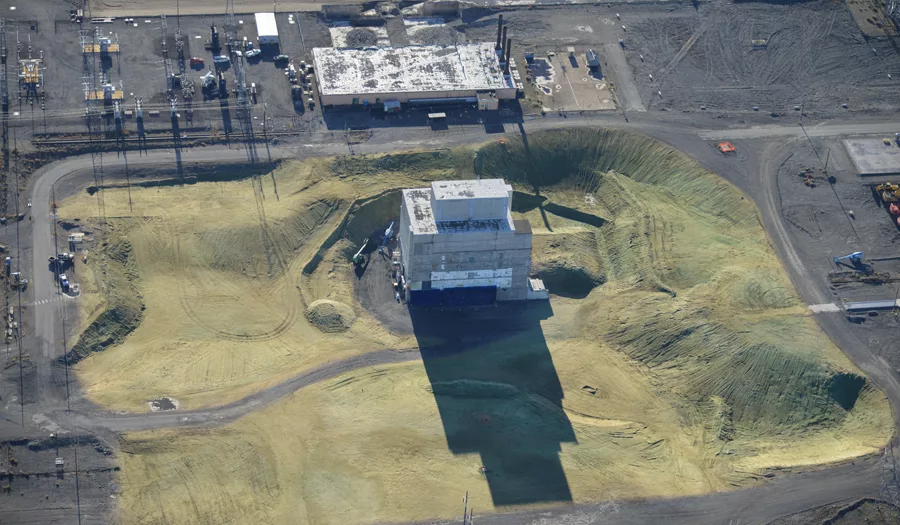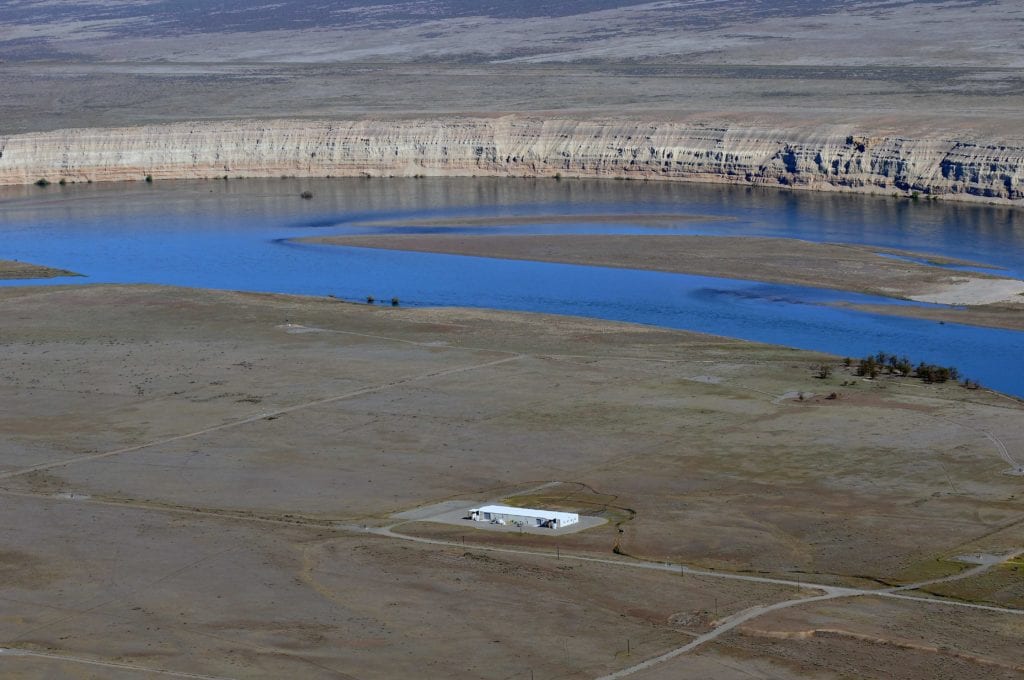
Home » Hanford site cleanup story unfolding
Hanford site cleanup story unfolding

May 16, 2019
There’s no question plenty of contamination remains at the Hanford site.
But let’s pause a moment to reflect on how much has been cleaned up:
- 2,300 tons of spent nuclear fuel resting near the Columbia River moved to dry storage.
- 20 tons of leftover plutonium stabilized and shipped off site.
- More than 20 billion gallons of contaminated groundwater treated.
- 489 tons of contamination removed.
- 889 of 1,715 facilities demolished.
- 1,342 of 2,032 waste sites remediated.
- Six reactors cocooned, or stabilized.
It was 30 years ago when the U.S. Department of Energy, U.S. Environmental Protection Agency and the Washington State Department of Ecology sat down and signed a comprehensive agreement that brought the Hanford nuclear site cleanup efforts into compliance with several federal environmental standards.
The document, called the Tri-Party Agreement, contained cleanup commitments, responsibilities and an action plan with milestones. It was signed May 15, 1989, and since then, substantial progress has been made.
The Department of Ecology regulates work done at the Hanford site, ensuring compliance with environmental protection laws and looking out for the well-being of the Columbia River, environment surrounding the former nuclear site and inhabitants.
The Department of Energy, largely through the help of corporate contractors, is responsible for the cleanup work, which ranges from cocooning nuclear reactors, digging and transferring toxic sludge and groundwater, and figuring out how to transfer toxic waste to a soon-to-be opened facility that can treat it for permanent storage.
Hanford is one of 16 Department of Energy nuclear waste sites nationwide, and it is the largest in size at 586 square miles.
Scientists produced plutonium at Hanford through the 1980s. It was used to make atomic weapons during World War II through the Cold War. That production left behind tons of waste in a previously sparsely-populated part of the state.
The first priority of the Tri-Party Agreement is to protect the Columbia River, and the river corridor. The 220 square miles along the river were used during plutonium production days and are a primary focus of cleanup.
When the Tri-Party Agreement was signed, 2,300 tons of spent nuclear fuel and 20 tons of leftover plutonium rested near the Columbia River. All of that has been moved to dry storage or stabilized and shipped off site.
Water treatment facilities are operating along the river corridor to treat potentially contaminated groundwater from entering the Columbia River. Groundwater at Hanford is not used for public drinking water. And while not all of the groundwater contamination has been treated, more than 20 billion gallons have been and 489 tons of contamination have been removed.
Nuclear energy requires a lot of water, hence the initial placement of nuclear reactors near the Columbia’s edge. There were nine former reactors along the riverbanks.
Today, six of those reactors have been cocooned, with two more to go. One reactor is preserved for future visitors.
Most of the work in the river corridor is finished, except for removing some radioactive material from one of the remaining reactors and from the 300 Area, said Geoff Tyree, Department of Energy external engagement lead for the Hanford site.
The remainder of work at the Hanford site is in the central plateau area where the plutonium was created and processed, composed of 1,715 facilities.
So far, 889 facilities have been demolished, and more than half of the nuclear waste sites have been remediated — 1,342 of the 2,032 waste sites, according to a 2018 progress fact-sheet from the Department of Energy. A lot of the work on the central plateau is focused on safely destroying the former plutonium-production facilities, as well as the chemical waste left behind.
“There were a lot of leftover materials,” Tyree said.
A lot of that waste was stored in tanks — 177 tanks worth, to be exact. While destroying and safely demolishing the actual buildings where plutonium was created, processed and treated presents its own challenges, figuring out how to treat the toxic waste leftover and stored in now-decaying tanks is a crucial focus.
During the plutonium production process, scientists had to destroy the metal fuel rods used to access the plutonium in the final stages of production. The chemicals used to destroy fuel rods became toxic during this process and could not be reused. They were stored in underground tanks ranging in capacity from 55,000 gallons to 1 million gallons. Workers retrieved all the liquid waste from these tanks in the early 2000s, but it’s the solid and sludgelike waste that presents real challenges. Workers have retrieved waste from 18 of the 177 tanks.
Developments at the Hanford site signal quicker progress in the future for tank waste treatment, however.
Department of Energy contractor Bechtel National Inc. is scheduled to open a vitrification plant in 2023 on the Hanford site that can treat the low-activity tank waste with a process that turns it into glass.
Washington River Protection Solutions officials believe that the next tank farm waste retrieval process will go quicker than previous operations.
So, in short, progress is being made.
The rate of that progress, however, is slow, and slip-ups as well as full-out stops occur, sometimes for months.
In 2017, a section of the Plutonium Uranium Extraction Plant Tunnel 1 collapsed, leading to two years of intensive focus and full-grouting of both that tunnel and the larger Tunnel 2, to prevent potential contamination exposure.
Similarly, destruction of arguably one of the most dangerous buildings left standing in the central plateau, the Plutonium Finishing Plant, ground to a halt after 42 workers inhaled contaminated material following two spreads outside the demolition zone. That work has resumed with renewed surveillance and more safety in place, but not before an eight-month hiatus. The reality is cleaning up materials that formerly produced toxic chemicals, as well as the waste left behind, is daunting work.
“We still have a long way to go, but we’ve made tremendous progress,” said Peter Bengtson, communications manager with Washington River Protection Solutions. WRPS currently holds the tank waste contracts at the Hanford site, through the end of September, when it expires. “It’s dangerous, hazardous work. There are a lot of unknowns. Just providing and installing new infrastructure around old tank farms, we find old cables or wires or pipelines that none of the drawings have on them.”
Beyond the hazards, the work is costly.
Hanford is funded solely through federal dollars on an annual basis, meaning contractors and regulators are relying on Congress and the president — to some extent — every year to see if achieving their agreed-to milestones is feasible with the available funding.
Randy Bradbury, communications manager for the Department of Ecology’s nuclear waste program, said he believes funding is at least partially to blame for the constant delays and back-ups at Hanford. Funding in the last five years, he said, has not met the minimum milestone deadlines.
For the upcoming fiscal year, the Trump administration proposed cutting the Department of Energy’s funding to the Hanford site by $417 million.
In fiscal year 2019, the site received $2.52 billion in federal funding and has requested $3.25 billion for fiscal year 2020. The new fiscal year begins Oct. 1.

Current Department of Energy budget documents predict the cleanup at Hanford to finish by 2078, with a 50 percent to 80 percent confidence level. In its 10-year contract, WRPS has removed waste from 18 tanks. Even if that pace were more than doubled, to say about 40 tanks in a decade, it would take four more decades to remove all of the waste from the underground tank farms at Hanford.
The ominous end-date represents yet another pushback to the cleanup efforts initially scheduled to finish in 2020, then the 2040s.
Bradbury said the more time it takes, the more infrastructure problems will continue to crop up. Indeed, 67 of the single-shell tanks used to store waste material have leaked, and the majority of the tank waste is stored in identical single-shell tanks built in the 1940s, 50s and 60s.
The Department of Ecology recommends extra funding now that would ultimately save a lot of money in the long run, so that the Department of Energy would not have to repair temporary infrastructure, as well as pay for treatment and permanent storage for remediated materials.
“What we’ve been recommending for a while is that plus-ups now will make a big difference in the long run,” Bradbury said.
The potential for budget increases, however, is subject to political winds, blowing in whatever direction they blow.
For now, progress continues forward, albeit at a measured pace.
Local News Hanford
KEYWORDS may 2019




